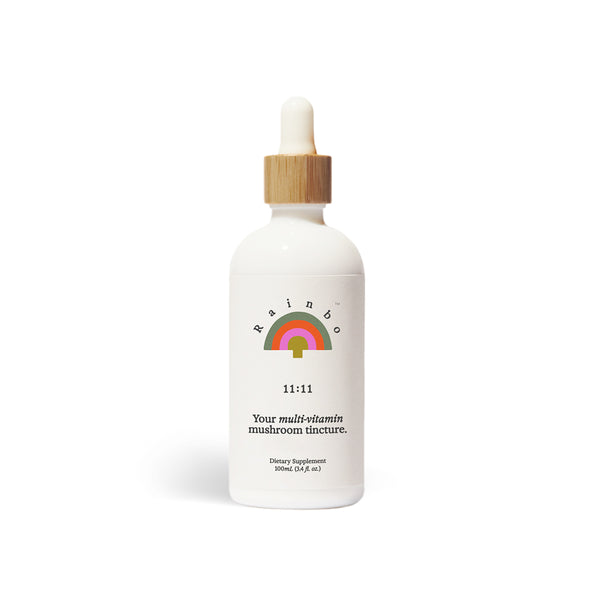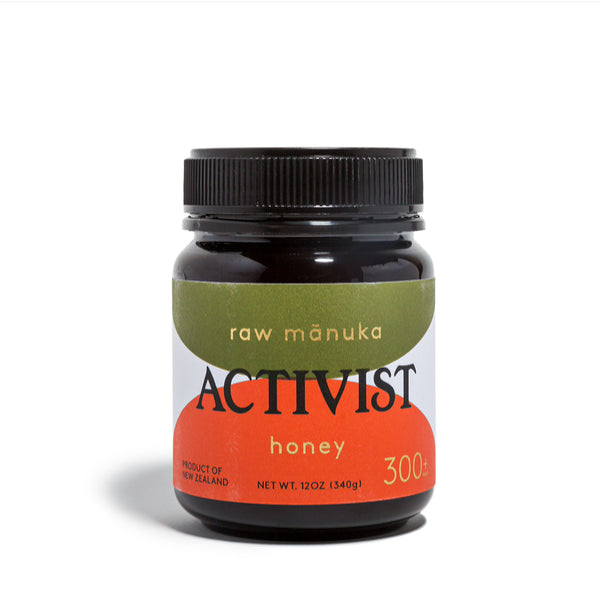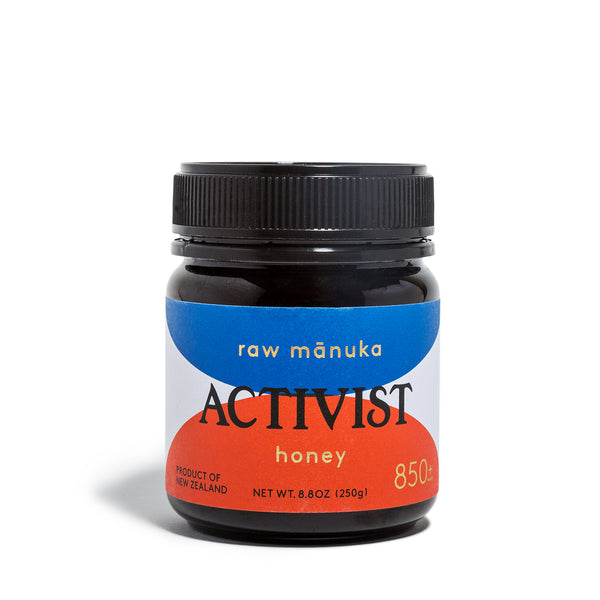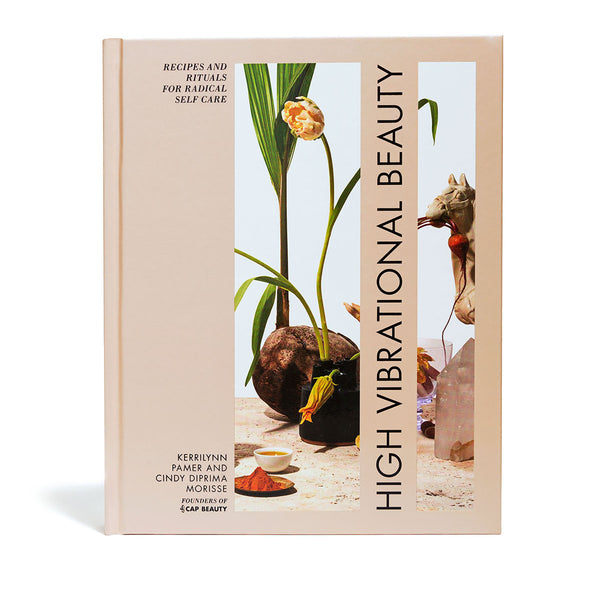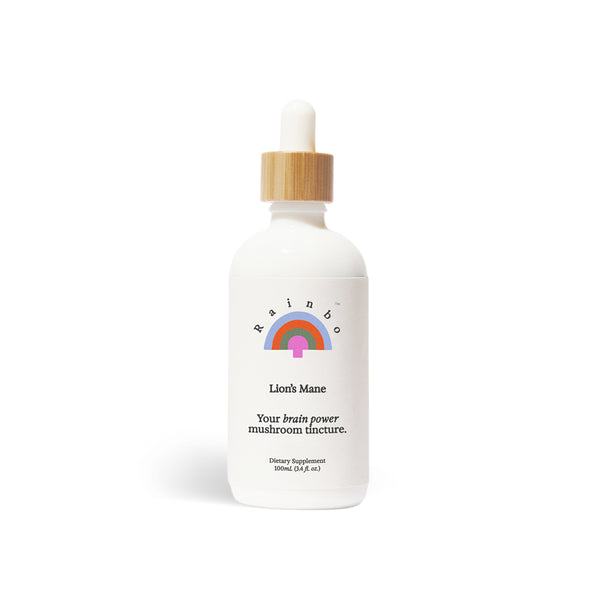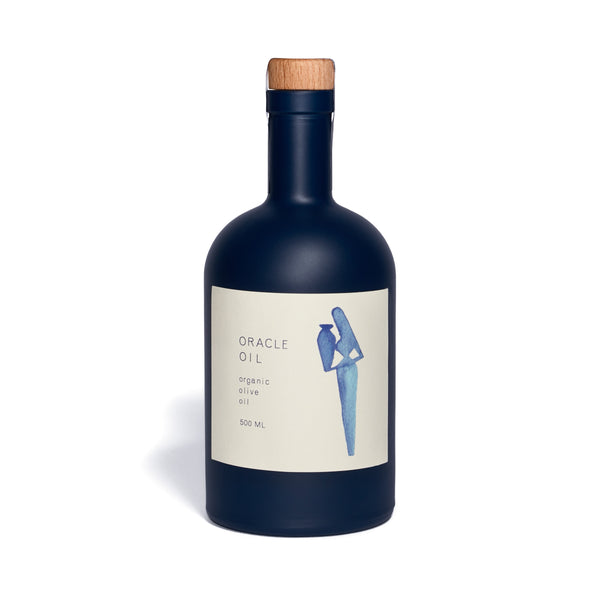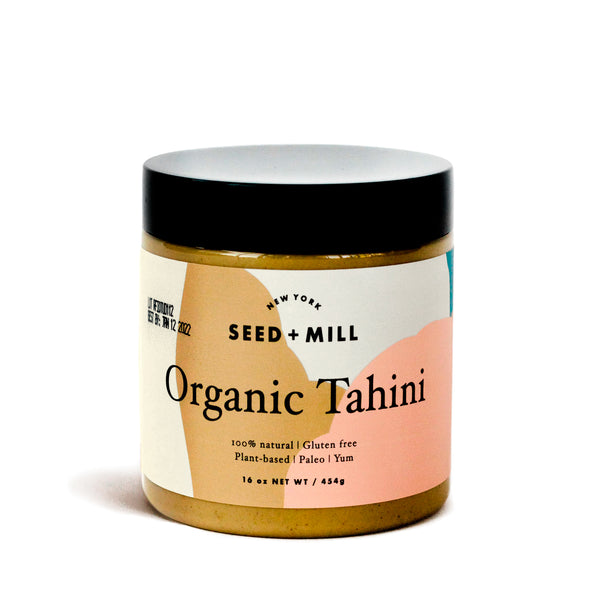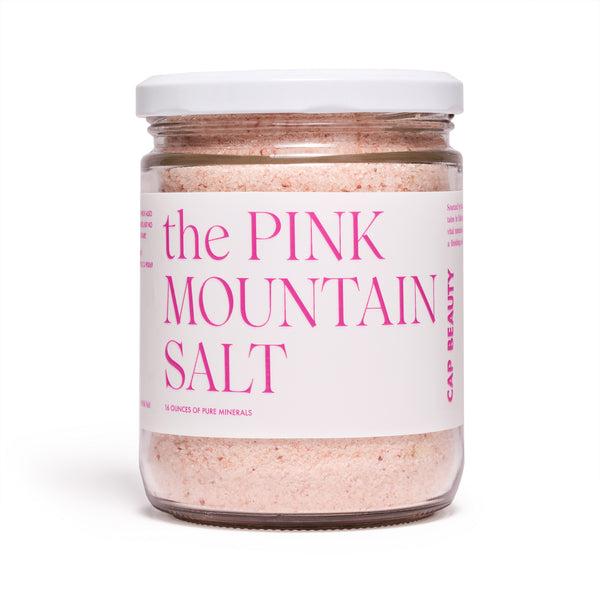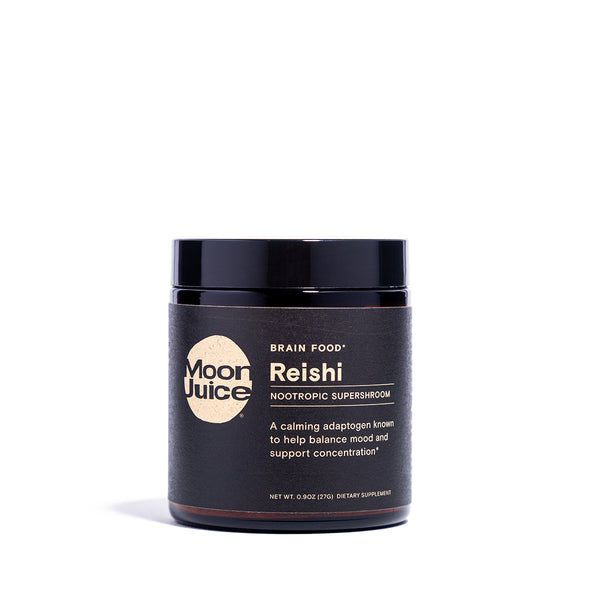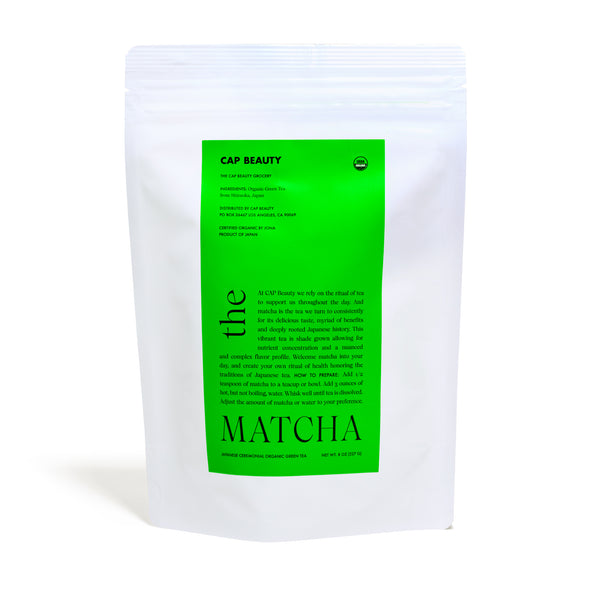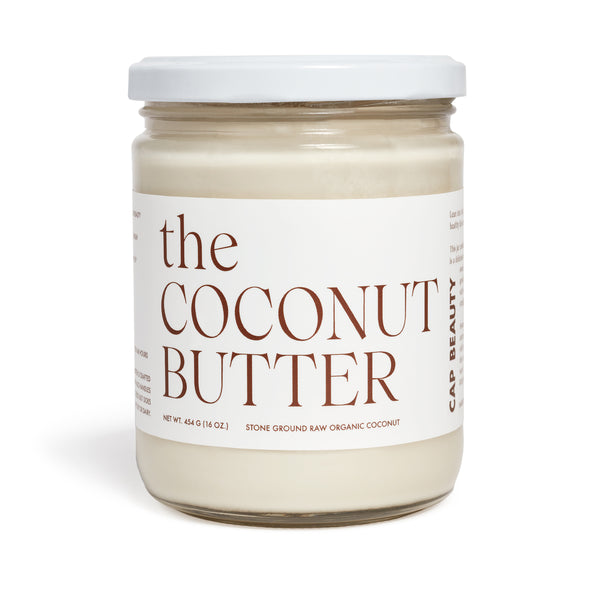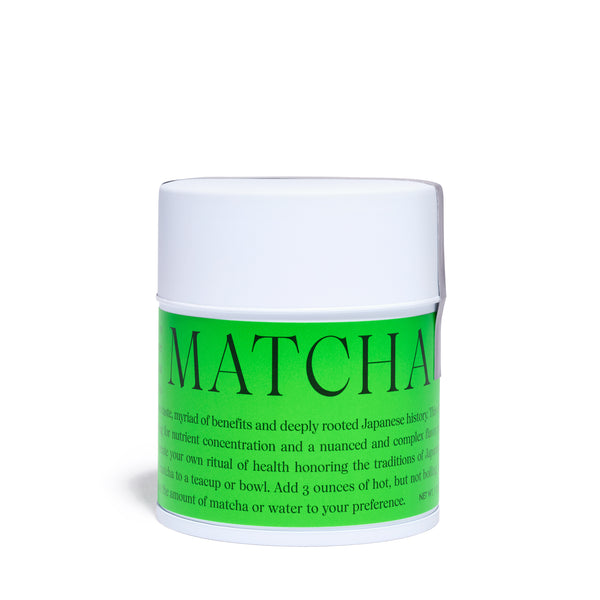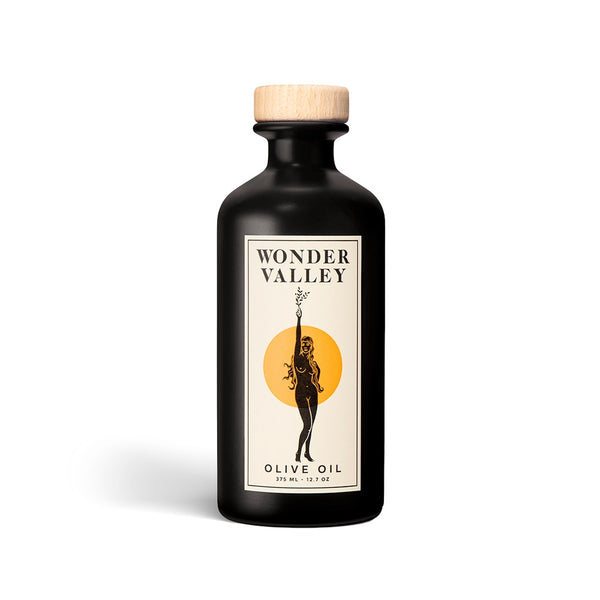What is your food philosophy?
My food philosophy is to eat what makes me feel good. It's as simple as that. I listen to my body and pull back on things that don't feel good. I believe in eating whole foods, non-processed, organic and local as much as possible.
What's always in your fridge?
My fridge is an ever-changing palette of inspiration. I think of my fridge as part of my Larder. I generally keep on hand: miso, capers, preserved citrus, shroomy nut and seed butter, miso mushroom paste, fermented vegetables, pickles, turmeric kraut, house-made pickled ginger, and turmeric, salt-cured green coriander seed, organic eggs, oat milk, labne, a variety of cheeses, maple syrup, dosa batter, and sourdough starter. And a plethora of fresh herbs and whatever vegetables strike my fancy.
What's always in your pantry?
I have a plethora of ingredients from all over the world. When I travel, I'm constantly bringing things back. For example, I recently went to Greece, where I bought beautiful fermented lemons, all kinds of citrus made into the most delicious spoon sweets, local honey, organic sesame seeds and olive oil. I stuff my bags with comestibles until they are bursting. All the fun things I bring home really inspire me in the kitchen. I collect salt and honey everywhere I go.
My most recent honey purchase came from a place in Oaxaca, high up in the mountains of the Sierra Norte, where I bought some local honey from a very tiny bee. They have their hives in the cracks of rocks, and the honey is very runny, almost like Melipona. My pantry is full of dried mushrooms and mushroom powders. I have mushroom powders from Far West Fungi, mushroom powders from CAP Beauty and Sun Potion, chocolate from Oaxaca, and many different kinds of sugars; I love jaggery and Mexican sugar, dark brown sugar, and molasses.
In my freezer, I keep rye flour, nuts, and seeds. I love Sicilian green pistachios, pink pistachios, pepitas, sunflower seeds, and Chia; you name it, it's in there.
I also consider my freezer to be a large part of my pantry. In the freezer I always have on-hand stocks and broths. So I often make the lion's mane broth and the everyday broth.


Tell us about Cooking With Mushrooms and how it came to be.
I had started another more larder-focused project and worked on that book since the early days of the pandemic. I needed help honing my ideas. I was going broader, constantly adding new ideas instead of streamlining. I tend to go big. When I met with my editor, she suggested just focusing on one ingredient, and that's when the idea for the mushroom book came about. I already had several mushroom recipes in the book I was working on at the time. Once I focused solely on mushrooms, the book flowed easily.
The biggest challenge for me was time management, since my primary job is as a photographer. I had to learn to balance work, writing, and recipe testing. Any cookbook takes an enormous amount of time and energy. I dreamed of recipes and words and would wake up in the middle of the night and quickly type an idea on my phone. Then, I went to bed and woke up thinking about mushrooms.
Another big challenge was what to include and omit; once I started developing recipes, it was tough to stop. I could do mushrooms volume 2 today. Mushrooms are so wildly delicious and adaptive that there is no end to how to cook them!
What about mushrooms excites you in the kitchen?
I love the smell of mushrooms and especially the smell of dried mushrooms. They take on a more concentrated aroma and taste. The mushroom's particular characteristic comes out so intensely. For instance, Candy Cap smells so incredibly maple-forward when dried, while Lion's Mane goes buttery and nutty. Mushrooms have many of the same characteristics, flavor profiles, and cues as good wine. So we can talk about mushrooms in the same way that we talk about wine. I believe terroir affects mushrooms in the same way it does grapes.
When did your love for mushrooms begin?
As a kid, I first fell in love with Mushrooms through a love of the outdoors. I grew up in Western Massachusetts on a small family farm with woods, pine forests and fields. My parents believed that we should spend time outdoors as much as possible. So every day we weren't in school, they said to go outside and play and generally, we wouldn't come back until dark. I was fortunate to have nature as my guide.
Also as a kid, I drew mushrooms constantly. I was obsessed with them. My obsession with them was primarily aesthetic. I wasn't interested in eating them because I thought they tasted like dirt at the time. However, my parents loved mushrooms — garlicky Pecorino mushroom stem filled mushrooms caps came out without fail every Holiday. When I spent time with my grandparents in Vermont in the summer, their friends would go Porcini hunting and come back with great baskets of large fragrant Porcini. My grandmother would thinly slice the Porcini and let them dry in the oven. They would then get tucked away in a tall glass jar where they would last her all winter. She would use them primarily for risotto and sometimes soak them for a broth layered with Pastina and Parmigiano. That deep earthy smell of drying Porcini reminds me of the forest floor; it's a particular smell that is sweet, earthy and a little dank.
As an adult, I spent three days in Northern Sweden with chef Magnus Nielsen at Faviken, trailing him in the kitchen, photographing, eating, and foraging. He was so connected to that specific place and it struck a familiar chord. Around that same time in New York, I discovered the New Amsterdam Market. A couple came from Vermont to the market every week with the most incredible mushrooms, a variety like I had never seen before.
The photographer in me wanted to gather them all up and photograph them. So I would meet them weekly, and they would save the most beautiful mushrooms for me. I took them home and immediately photographed them; this went on week after week. Truthfully, I didn't know how to cook these mushrooms; I wasn't sure what to do with Lions Mane, Maitake, Matsutake, or giant flushes of Oyster mushrooms as big as a small turkey. So I asked them, how do you cook these? What does each of these taste like? What should I be doing with this mushroom or that mushroom? I had been photographing the mushrooms they gave me and then set them aside on a tray on my radiator to dehydrate like small knarled sculptures. I accumulated all these jars of different dried mushrooms like some crazy science lab. Over time, we became friends, and they gave me many tips on how to cook mushrooms. That was the time when I started my culinary exploration of mushrooms.

What are your top 5 favorite ways to prepare mushrooms?
My philosophy about cooking with mushrooms is that you can cook the mushrooms the way you cook anything. If you'd like to sauté then go for it; if you'd like to grill, by all means, do so. Mushrooms can take an enormous amount of heat and still hold their structure because they don't break down. So, they can be poached, pickled, sautéed, dry sautéed, grilled, roasted and confit and of course boiled for stocks and broths.
What's your favorite way to clean and prep mushrooms?
What a highly controversial question! To plunge or not to plunge? To wash or not to wash? Again, this is very personal and it depends on the mushrooms.
Cultivated mushrooms are grown in a sterile environment, so they don't need cleaning. However, wild mushrooms might still have bits of the forest floor, soil, or bugs. I use a soft, damp cloth and a little brush to clean my mushrooms. When I have a mushroom such as a wild bear's tooth or a cauliflower mushroom with a lot of grooves, nooks, and crannies, I may plunge the mushroom to remove any dirt and debris, but then I cook it immediately.
I'm not particularly eager to store mushrooms that have been wet because they degrade more quickly. But this is a highly personal subject and you will find that everyone has a different thought on the matter!
Do you have a favorite mushroom and why?
My favorite mushroom, hands down, is Maitake Hen of The Woods. Not only is it beautiful and frilly, like a slightly agitated chicken mid-feather fluff, but it is deliciously aromatic and so profoundly flavored. Mushrooms, for me, are the main event. I don't think they need to be compared to anything, but generally, people like to compare them to the taste of meat. So often, that's what people are looking for and Maitake definitely delivers.
What are your favorite mushroom flavor pairings?
Mushrooms pair so beautifully with so many other umami flavors. They are delicious when cooked with good salty butter, olive oil, duck fat, rich Pecorino and Parmesan cheese or deeply robust miso paste, or fermented fish sauce. They are also excellent with umeboshi or umeboshi plum vinegar and spices that remind me of the forest, such as juniper, pine and spruce tip. In the sweeter dessert realm, I love mushrooms with chocolate, coffee and maple.
What was the most surprising thing you learned about mushrooms while writing this book?
So. Many. Things!!
The most surprising thing I learned about mushrooms working on this book is that we are more closely related to mushrooms than plants; we share over 50% of our DNA with fungi.
I'm also now aware that without fungi, we wouldn't have the world we know. Fungi are decomposers and re-composers of life, so they complete the circle of life. We need decomposition and re-composition to live. Without fungi, our forests would be littered with debris and we wouldn't have fermentation, bread, chocolate, wine, or beer. Mushrooms are essential to life and they are a true queendom and should be respected and honored. Many people still think about mushrooms as plants, but they are not plants; they are separate from the animal kingdom or the plant kingdom; they are their unique queendom.
What is the difference between medicinal and culinary mushrooms?
The line between medicinal and culinary mushrooms is blurred. Most medicinal mushrooms you can eat, but there are a few that are too tough to eat, such as reishi, chaga, turkey tail or birch polypore. These mushrooms need to be processed, either ground into a powder or steeped into a tea or made into a tincture.
On the other hand, many culinary mushrooms have excellent medicinal properties. Mushrooms are naturally low in fat and sodium, have some protein and vitamin B Also, if you take a mushroom and put it in the sun before cooking it, it absorbs vitamin D and it will retain that vitamin D after cooking. Most of us are very low in vitamin D. I'm definitely of the school thought that food is medicine and you are what you eat. Let's eat our whole foods and think holistically about what we put into our bodies!

If you could only eat three mushrooms going forward, what would they be and why?
If I could only eat three mushrooms, they would be Maitake, because I love the texture and taste; Lion's Mane, which is delicious and so good for our brains; and shiitake because of its naturally earthy and umami flavor as well as its incredible medicinal properties.
What mushroom dish do you recommend to someone who doesn't like mushrooms yet?
For someone unsure about mushrooms, try making mushroom schnitzel out of king trumpet mushrooms, which are meaty and hold their structure. So much so that some people don't even realize they're eating a mushroom. Once fried in Panko and olive oil, they take on a delicious meaty texture, almost like chicken.
For me, mushrooms are always the main event. They have the same amino acids and beta-glucans present in meat and the fibrous textures that remind us of meat, so they are an obvious choice for someone trying to eat less meat. Mushrooms are also so incredibly diverse; their flavor profiles are fast and varied. Some mushrooms taste fruity, while others taste nutty or more like pine or citrus. Some mushrooms even have a meaty taste to them, and others are more reminiscent of seafood, like crab or lobster.
I believe the best way to win someone over is to buy a small amount of a variety of mushrooms and cook them very simply; roasted or dry sautéed. This will help them to understand and appreciate the flavor profile of each variety. All mushrooms do not taste the same. Many people have had a bad experience or memory eating canned mushrooms or slippery button mushrooms. I promise, once you get into a broader world of eating mushrooms, those bad memories will fade away quickly.
Do you have a favorite sweet preparation of mushrooms?
I am so partial to the mushroom ice cream from my book made with candy cap mushrooms. It's so delicious and people are amazed to encounter mushrooms and sweets together. The flavor almost goes to a salted caramel place.
I also love the Seedy Soy Mushroom Crumble that you can pair with any fruit. It's very earthy with the miso paste, soy and mushroom powders. I love it atop — apples, pears, plums, cherries, you name it. And it feels really wholesome and nourishing to eat.
The chocolate porcini pot de creme is also a favorite because it is rich and easy to make.
Do you supplement with any medicinal mushrooms?
I microdose, take medicinal tinctures and sometimes take mushroom supplements. I have gotten into the habit of making mushroom powders from dried mushrooms, which are 100% pure and only the fruiting body. I mix the powders with Manuka honey and take a spoonful daily.
Have you seen your health improve since eating more mushrooms?
I can only speak from personal experience, and I would say yes, my health has gotten better since I've been taking mushrooms and since I've been eating mushrooms on the regular. I have chronic Lyme, which is many years old, at least 15 to 20 years old and can easily get exhausted. I get vertigo when working too hard and pushing myself too much. Since I've started to take the tinctures, I can pull myself back from that pretty quickly; when I start to feel it, I dose up on extra rounds of tinctures, mushroom powder and mushroom/honey tea broth. I can feel myself getting stronger and not slipping into that same spiral of vertigo, joint pain, and inflammation.


How do you incorporate mushrooms in your weekly / daily diet?
Working on this book, I ate mushrooms for breakfast, lunch and dinner for almost a year! I never go to the farmer's market without buying mushrooms; they are absolutely part of my world. I love to make a Mushroom Frittata on the weekend or a soft scramble with sautéed mushrooms. And I make mushroom broth that I can sip on whenever I feel like it. I keep mushrooms in my freezer. I make mushroom tinctures, which I take daily. I also use adaptogenic honey on my Maitake Salty Sourdough Rye and use mushroom powders in my baking and cooking.
My father passed away in 2020 during Covid, and I found it to be a very dark and depressing time, and since I have been Microdosing psilocybin I feel it's helped my anxiety, depression and changed my perspective on loss.
Could you share what you might typically eat in a day?
FOR BREAKFAST / EARLY LUNCH:
A Carob mushroom latte (we need to bring carob back!) or hot cup of Lions Mane or Shiitake broth.
I like to eat breakfast around 11 am, so it's more like an early lunch. My ideal meal would be Rice Porridge (made with mushroom broth of course), Pan Seared Local Trout and Crispy mushrooms on top. I would then load it up with house-made turmeric, pickled ginger, salt-cured green coriander seeds, fresh herbs, and a little Umeboshi plum vinegar. It's a perfect bridge dish between breakfast and lunch.
MIDDAY SNACK:
Mushroom Larb on crunchy little gems in the late afternoon. I might also like a sweet about now, like the Shroomy Nut Butter Chocolate Chunk Cookie.
DINNER:
A classic weeknight dinner at our house is The Miso Mushroom Butter Roasted Chicken with potatoes. I should have called it butter chicken because it's bathed in miso mushroom butter.
DESSERT:
For dessert, I might have another cookie or if feeling fancy, the Mushroom Chocolate Pot De Creme. Or a piece of Maitake Sourdough Rye toast with a little Shroomy Nut Butter and a drizzle of adaptogenic Shroomy honey and hit of flaky sea salt.
Then to bed to dream about more mushrooms!!!

BROTHY MUSHROOMS, BEANS, AND GREENS
From Cooking with Mushrooms
By Andrea Gentl
I love to wander through the greenmarket without any particular recipein mind, looking for what is in season and then forming ideas based onwhat I see. This recipe is adaptable enough to take you through all theseasons, depending on the greens and herbs that are available. It alsofreezes (and halves) easily. If I can find it, I include agretti (also calledmonk’s beard), a delicate, salty, mineral-rich green from the samphirefamily. Otherwise, mustard greens, sorrel, young dandelion, escarole,spinach, radish greens, or radicchio all work well. I add a leek nomatter what green I am using; the slow cooking brings out its sweetness.Use what inspires you, and if you have a question, ask the farmersfor suggestions. More often than not, they are happy to chat.
SERVES 6 TO 8
1 cup (about 180 g) dried beans, such as flageolet, white, or navy
½ pound (225 g) fresh mushrooms (shiitake, maitake, oyster, or any type available)
½ cup (120 ml) plus 2 tablespoons extra-virgin olive oil, plus more for drizzling
1 head garlic, cloves separated, smashed, and peeled
1 large leek, thinly sliced and well washed 1 medium shallot, finely chopped
10 cups (2.4 L) mushroom broth, such as Everyday Mushroom Broth (page 80) or Lion’s Mane Broth (page 82), or a combination of broth and water
1 parmesan or pecorino rind, plus grated cheese for serving
2 tablespoons Miso
Mushroom Paste (page 57) ½ pound (230 g)
agretti (2 large bunches) or other seasonal greens, trimmed and chopped
¼ dried red chile or ¼ teaspoon chile flakes (optional)
½ cup (25 g) fresh flat-leaf parsley leaves, coarsely chopped
¼ cup (7 g) fresh oregano leaves
½ cup (14 g) fresh mint leaves, coarsely chopped
1 teaspoon coriander seeds, crushed with the side of a knife
½ teaspoon coarsely ground black pepper, plus more for serving
1 teaspoon Himalayan pink salt, plus more to taste
1 lemon, halved, for serving Chile flakes, for serving
Flaky sea salt, such as Maldon, for serving
In a large bowl, cover the beans with 2 quarts (2 L) water. Let them soakfor at least 8 hours or up to overnight.
Preheat the oven to 300°F (150°C).
Gently shred or tear the maitake or oyster mushrooms into small pieces,or thinly slice the shiitakes.
In an 8- to 12-quart (7.6 to 11.3 L) heavy-bottomed ovenproof stockpot (ora large Dutch oven), heat ½ cup (120 ml) of the oil over medium heatuntil warm and shimmering. Add the garlic, leeks, shallot, andmushrooms. Cook until soft, about 5 minutes.
Drain the beans and add them to the pot along with the remaining2 tablespoons oil, the mushroom broth, parmesan rind, misomushroom paste, agretti, chile (if using), fresh herbs, coriander seeds,black pepper, and pink salt.
Cover, transfer to the oven, and braise for 3 hours.
Remove and discard the cheese rind. Ladle the broth and beans intobowls for serving. Finish each serving with pepper, grated cheese, adrizzle of oil, a squeeze of fresh lemon, chile flakes, and a pinch of flakysalt.
The brothy beans can be frozen for up to 3 months.
Cooking With Mushrooms: A Fungi Lover's Guide to the World's Most Versatile, Flavorful, Health-Boosting Ingredients by Andrea Gentl. Artisan Books © 2022.

